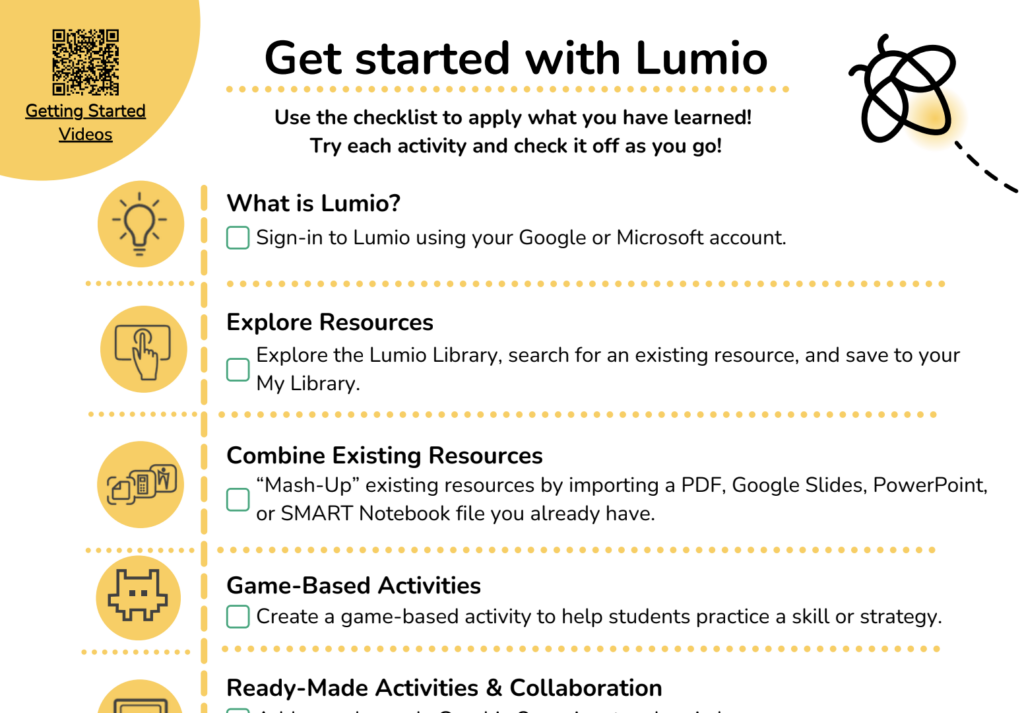OVERVIEW & PURPOSE
The purpose of this collection of resources is to demonstrate how these digital platforms and online strategies can be used as part of young children’s’ learning environments. During the Fall 2023 semester students were introduced to tools to make interactive instructional videos (edPuzzle), the power of podcasts for parents & children (RSS), ways to use interactive slides (PearDeck), and how to use reflective teaching tools (GoReact) to improve your practice, which can be further supported using the Guide for Students to learn how to operate GoReact.
The explainer video, to the left, provides instructions about creating an RSS podcasting account. In addition, I provide a site with resources for GoReact as well as reminding students about edPuzzle.
The following teaching strategies have been modeled across my visits and asynchronous interactions:
- Whole class instruction via asynchronous video recordings
- Explainer videos that point to resources, processes, and support
- Interactive instructional videos with edPuzzle
- Read aloud recordings with RSS podcasting platform
- Visual reminders via text and imagery
- Sharing learning outcomes with peers and your instructors on Padlet
- Assessment strategies have included summative, formative, and informal checks for understanding
RESOURCES
The following items were shared with students during in-class meetings or via online as supplemental resources.
- Site shared in video above – This document reminds students about the resources we have either visited together OR the resources I suggested to try outside of class (i.e., for podcast episodes).
- **GoReact – This is the video tutorial for GoReact: Video for Students.mov**
- Additional resources for GoReact can be found on the company’s YouTube Channel’s playlist.
- Instructional Video Planning – This is a template that can be customized by the student.
- Instructional Strategies & Digital Resources – This wheel was inspired by the Pedagogy Wheel, which aligns SAMR model with Bloom’s Taxonomy and digital media resources. How might you revise or improve? What would your wheel look like?
- Interactive Read Aloud Planning – This document guides students through some of the steps required when preparing a read aloud.
- Interactive Read Aloud Planning Template – This site shares all the book components and skills to guide student planning whether delivered via podcast episode OR video.
- Stories for Kids Podcast – Listen to these stories and read alouds as a way to observe the strategy using a tool such as ‘podcasting’ — BONUS: Watch this video explaining the power of a read aloud.
- Students, please, post your videos and podcast episodes to this Padlet as a method for sharing with one another.
- Complete the edPuzzle below to demonstrate your level of understanding and mastery.
QUESTIONS TO CONSIDER
INTERACTIVE
APPS, SLIDES & VIDEOS
Q: Have you trained yourself how to use Edpuzzle?
If you need additional support, please visit the Edpuzzle Playlist of tutorials made specifically for those who are just starting to use it.
MULTIMODAL
VISUAL & AURAL
Q: What does it mean to create multimodal lessons? A: This means the teacher is intentional about choosing various media to deliver instruction using many different kinds of modes – visually, orally, tactile (hands-on) -Do you need more information to understand multimodal texts? Listen to Dr. Kress explain multimodal learning.
EXAMPLES
APPROPRIATE ACTIVITIES
Q: What are some ways edPuzzle or Pear Deck can be used with K-2 grades?
Q: How might we use RSS with infants and preschoolers and their families?
BONUS: None of what I have shared with you this semester is meant to replace important, time-tested, science backed practices human interaction. Please keep in mind when, where, how often, and who to use these tools. Watch TED talk with 7-year old Molly explaining what’s most important in the first FIVE YEARS.
PODCAST SAMPLES FOR YOUNG CHIDLREN

RSS is the platform students can use to create read alouds for preschool and early childhood students. Creating an RSS account is easy to do. The only way to improve is to practice. Listening to others’ podcasts is also one way to help your practice. Here are some podcasts made with an audience of young children in mind OR an audience of teachers who work with children:
- Sparkle Stories
- Buttons & Figs
- Storynory
- Read-Aloud Revival
- 3 Point Perspective
- 12 of the BEST Children’s Read Aloud Podcasts
InTASC & ISTE Standards written as objectives
- InTASC Standard 9(d) – Students will be able to actively seek professional, community, and technological resources, within and outside the school, as supports for analysis, reflection, and problem-solving (e.g., explores the provided resources and saves the links most helpful to the student)
- ISTE Facilitator 2.6.d – Students will be able to model and nurture creativity and creative expression to communicate ideas, knowledge or connections (e.g., making podcasts for read alouds OR making interactive videos)
- NAEYC 1 & 4 – Students will be able to structure the environment for learning with an emphasis on the use of time, space, and materials (e.g., making slides, videos, and podcasts to supplement, build, and reinforce concepts being taught).
- NAEYC 1, 3, 4 – Students will be able to develop skills to plan developmentally appropriate language and literacy activities for young children (e.g., what are appropriate activities and what tools are best to be used to deliver them).
